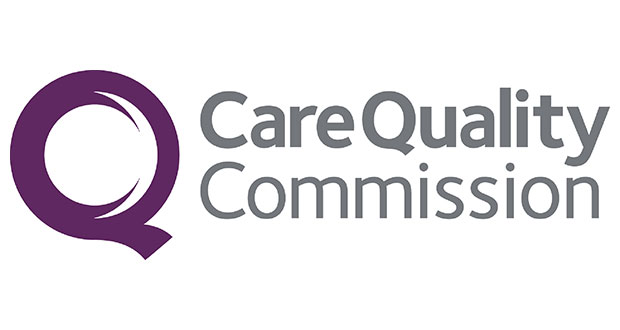Quality Of Care Homes Got Worse In 1 In 5 Local Authorities In The Last Year, New Research Reveals
 The proportion of care homes rated “inadequate” or “requires improvement” increased in 1 in 5 local authority areas in 2017. A dramatic variation in the quality of care homes at a regional and local authority level across England continues to exist. The North West is the worst performing region when it comes to the proportion of satisfactory care homes, while London and the East of England are the best performing regions. That’s according to new analysis by Independent Age, the older people’s charity[1].
The proportion of care homes rated “inadequate” or “requires improvement” increased in 1 in 5 local authority areas in 2017. A dramatic variation in the quality of care homes at a regional and local authority level across England continues to exist. The North West is the worst performing region when it comes to the proportion of satisfactory care homes, while London and the East of England are the best performing regions. That’s according to new analysis by Independent Age, the older people’s charity[1].
In some areas such as Tameside or Portsmouth, older people and their families continue to face little choice of quality care, with around 1 in 2 homes rated not good enough by the Care Quality Commission.
The main regional findings are:
- The North West contains five of the eight worst performing English local authorities on care home quality, with more than one in four care homes across the region performing poorly.
- The North West (28.2% of care homes performing poorly), Yorkshire and The Humber (26.1%) and the West Midlands (21.3%) are the worst performing regions of England for care home quality.
- London (17.4% of care homes performing poorly), the East of England (17.4%) and the East Midlands (18.2%) are the best performing regions for care home quality.
The new analysis is based on CQC inspections of care homes which rate homes as either ‘Outstanding’, ‘Good’, ‘Requires improvement’ or ‘Inadequate’[2],[3]. The analysis regarded homes rated ‘Requires improvement’ or ‘Inadequate’ as being poor performers.
Performance at local authority level shows even greater variation. Seven local authority areas have more than two in five homes rated ‘Inadequate’ or ‘Requires improvement’:
- Tameside – 56.8% of homes
- Portsmouth – 46.5%
- Kensington and Chelsea – 45.5%
- Manchester – 43.8%
- Bradford – 43.6%
- Stockport – 43.3%
- Trafford – 43.1%
In contrast, eight local authority areas have less than 5% of homes rated ‘Inadequate’ or ‘Requires improvement’, including five that have no care homes with those ratings:
- Bracknell Forest, Isles of Scilly, Reading, Rutland and Southwark – 0%
- Thurrock – 3%
- West Berkshire – 4.5%
- Richmond-upon-Thames – 4.7%
This research also provides, for the first time, a year-on-year comparison on care home performance across regions and local authorities in England. The key findings from this year-on-year comparison are:
- In every region, the percentage of poor care homes has decreased in the past year.
- However, in every region, at least one local authority has seen an increase in the percentage of poor care homes.
- Five local authorities have seen an overall improvement in the percentage of care homes, yet still have more than 2 in 5 care homes rated as “inadequate” or “required improvement”. This illustrates that, while improvement is welcome, older people and their families are still struggling to find a choice of good homes.
Commenting on the findings, Janet Morrison, Chief Executive of Independent Age, said:
“Older people and their families are still facing an unenviable choice between poor care homes in some parts of the country. While it is encouraging that there has been an overall improvement in quality, this masks persistent variation in the quality of care homes within each region of the country. The market simply does not seem to be able to drive the rapid improvement needed in many areas. While the Government seems happy to deflect all decisions about social care into the vague promise of a green paper, local authorities are having to make difficult decisions now about care in their area. We urgently need both Government and local authorities to demonstrate that they understand the reasons for this variation and that they have the ability to address it.”
Independent Age believes the drivers for care home quality variation includes factors such as low levels of funding by local authorities, low pay and difficulty recruiting staff, and the lack of a good support mechanism for improving care homes that are struggling. The care homes market is now valued at nearly £16 billion. However, social care is facing a £2.6 billion funding gap by 2019/20[4].
In order to improve quality in the market, Independent Age makes the following recommendations:
- The government’s forthcoming green paper must not be restricted to narrow questions of social care funding and finance, but must also address questions of quality in the social care market.
- In areas where there is a failure of quality, the local authority must do more to fulfil their Care Act duty to shape the local care market.
- The Department of Health and Social Care must demonstrate leadership on tackling regional variation in care home quality.
The briefing ‘Care home performance across England 2018’ is part of an Independent Age campaign to improve the quality of care homes available to older people.
Dominic Carter, Senior Policy Officer at Alzheimer’s Society, said: “These figures are shocking and shameful, but they tell a story we hear all too often. Decades of chronic under-funding mean care homes are stuck between a rock and a hard place, struggling to meet rising need with shrinking resources, forcing families affected by dementia to make impossible choices.
“Not only have we heard of poor quality care, but also of families struggling to even get their loved ones with dementia a place in a care home – one woman told us how she called round nine homes before she could find one willing to take her mother.
“70% of people in care homes have dementia, and they are at the mercy of a system on the brink of collapse. The Government must act now, with meaningful investment and a fresh approach to delivering care, or the system will collapse and people with dementia will continue to suffer needlessly.”
Cllr Izzi Seccombe, Chairman of the Local Government Association’s Community Wellbeing Board, said:
“This study sadly reflects the consequences of the social care funding crisis and is further evidence of the ever more pressing need to adequately fund adult social care for both the immediate and long-term.
“Councils have been doing all they can to protect services that care for older and disabled people and will continue to do so. But the scale of the pressures facing the sector, combined with the scale of underfunding the sector is grappling with, inevitably impacts on the quality of care provided and its availability.
“This is symptomatic of an increasingly fragile provider market, in which providers are either pulling out of contracts or going out of business. It is also leading to growing unmet need, further strain on informal carers, continued pressure on an already overstretched care workforce, and a decrease in social care’s ability to help mitigate demand pressures on the NHS.
“The stark reality is that the quality and choice of care homes will likely get worse, unless immediate action is taken to tackle social care underfunding and implement long-term reform of the sector.
“The Government’s forthcoming green paper, and its separate work on working age adults, provides an essential opportunity to secure the long-term sustainability of adult social care and support so that older and disabled people receive quality care that supports their wellbeing and independence and can better plan for the future
“But we cannot afford to wait for those reforms to deliver; we need action now. As a down-payment on funding reforms, Government needs to fully plug the funding gap facing adult social care, which is set to be more than £2 billion by 2020.”
[1] The analysis is set out in a new briefing, ‘Care home performance across England 2018’, published by Independent Age.
[2] An explanation of Care Quality Commission ratings can be found at http://www.cqc.org.uk/content/ratings
[3] The analysis was carried out in January 2017 and the figures reflect CQC ratings at the time.
[4] Provisional Local Government Finance Settlement 2017/18 – on the day briefing, LGA, 15 December 2016 Link





